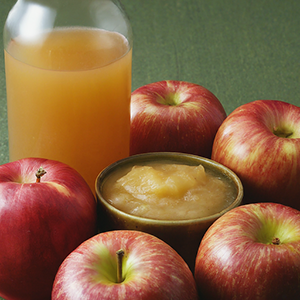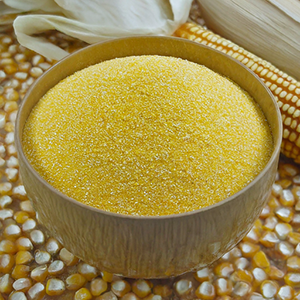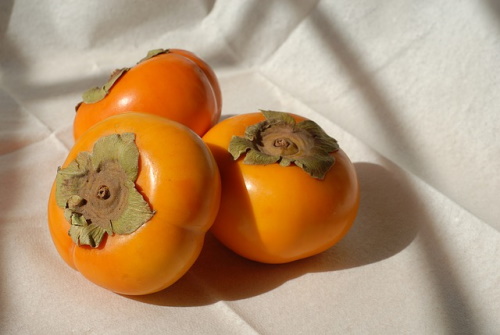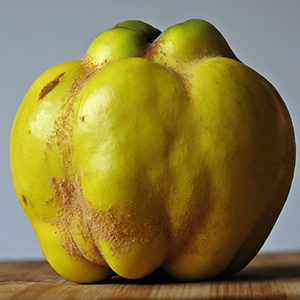The intestine is a channel through which food passes. As it advances through the small intestine, most of the primary nutrients they contain are absorbed. That’s why the right foods for the intestines are so important. What is left is moved to the large intestine and is concentrated there as feces, which are finally expelled from the body. The two most common intestinal disorders are related to the speed with which food travels through the intestine:
- Too rapidly results in diarrhea, consequently losing water, mineral salts, and other nutrients the body absorbs.
- Too slowly results in constipation. The feces putrefy and produce toxic substances, which are absorbed into the blood and cause autointoxication.
Foods for The Intestines

The pectin in apples acts as a sponge that absorbs and eliminates the toxins produced by the bacteria that cause gastroenteritis and colitis. Also, its tannins dry the intestinal mucosa and reduce inflammation. The organic acids act as antiseptics and restore the normal bacterial flora in the intestine.
A diet based exclusively on apples is effective in any diarrhea. When the digestive organs are affected, apples are best prepared as applesauce, baked, or cooked. Apples regulate intestinal function and correct both diarrhea and constipation. Eating one or two apples on an empty stomach in the morning helps overcome intestinal hypotony, the most common cause of constipation.
The CARAMBOLA’s delicate pulp is rich in soluble vegetable fiber, which explains its soothing laxative action. This fruit is one of the best foods for the intestines because it helps with constipation. Two or three carambolas at breakfast facilitate evacuation.
SAPOTE is an excellent intestinal astringent because of its richness in polyphenols and is recommended in cases of diarrhea and gastroenteritis.

CORN, as well as cornmeal and other means of preparation, have a soothing effect on the intestinal mucosa. Corn contains no gluten, making it the best food for digestion problems. It is recommended particularly in these cases:
- Intestinal dyspepsia is characterized by fermentation, gas, and pain (cramping).
- Irritable bowel is characterized by alternating between periods of constipation and diarrhea.
- Chronic colitis (inflammation of the large intestine), particularly in cornmeal flour.
- Weaning diet for nursing infants, also in the form of flour.
- Celiac disease: This disease results from intestinal intolerance of wheat gluten.

PERSIMMONS act to both soothe and dry the walls of the digestive system. This is due to the combined action of their tannins, pectin, and mucilage. The soothing effect is more intense in certain varieties and those not completely ripe. In addition to their relaxing effect, persimmons are anti-inflammatory because of their considerable pectin and mucilage content. The carotenoids they contain also contribute to this effect.
They are beneficial in cases of diarrhea or colitis from any cause. Three to six persimmons a day aid in quickly regulating intestinal movement and reducing inflammation in the digestive tract’s mucosa, making persimmons one of the best foods for the intestines.

PLUMS are gentle and effective laxatives thanks to the combined action of pectin and the substance that stimulates intestinal movement. In contrast to insoluble vegetable fiber such as bran, plums’ soluble fiber soothes and protects intestinal walls. A study conducted at the University of California showed that 12 prunes a day increased the weight of feces by 20%, making them softer and more accessible to expel.
Eating plums regularly (fresh plums in the summer, prunes the rest of the year) eliminates intestinal atony and helps reeducate the bowel. Prunes contain more pectin and active ingredients, but fresh plums are also practical. Since plums and prunes are nonirritating laxatives, they may be used without risk for extended periods (months or even years), which cannot be done with other laxatives.
Children and the elderly tolerate plums and prunes very well, making them the laxative of choice for constipation in both groups.
POMEGRANATE is considered one of the best foods for the intestines. Its astringent and anti-inflammatory action on the digestive tract makes it suitable for infectious diarrhea caused by gastroenteritis or colitis. It is also beneficial in cases of flatulence or intestinal cramps. Surprising results have been achieved in chronic cases such as ulcerative colitis or granulomatous colitis (Crohn’s disease).

The QUINCE’s astringent and anti-inflammatory effect on the intestine is due to two substances, apparently at odds with each other.
- Pectin: Soluble fiber that soothes the intestinal wall and facilitates bowel movement.
- Astringent tannins that dry the intestinal mucosa and reduce its inflammation.
As a dessert or snack, quince is one of the few gut-friendly foods for children and adults, with a tendency to lose feces or flatulence. It is highly recommended as a first solid food after the acute phase of diarrhea caused by gastroenteritis or colitis. That is why quince is among the best fruits for digestion.
RICE is beneficial in the following cases:
- Any case of diarrhea: Rice boiled with a bit of oil and salt, together with apple and yogurt, is also a great first solid food after a case of diarrhea of any cause. Its ease of digestion and mild astringent action make rice one of the best foods for the intestines.
- Diarrhea in infants: Rice water is the ideal fluid for oral rehydration in case of diarrhea, particularly for children.
FIGS: Fresh figs and rehydrated dried figs are beneficial in cases of slow intestinal peristalsis. They act like prunes: They soothe the digestive tract and stimulate peristalsis in the intestine, thus moving the feces.
Related reading:
- Browse more Foods articles: https://naturalhealthmessage.com/nutrition/foods/
- Digestive Health guides: https://naturalhealthmessage.com/conditions/digestive-health/
- Supplements & reviews: https://naturalhealthmessage.com/supplements/
DISCLAIMER: All content on this website is presented solely for educational and informational objectives. Do not rely on the information provided as a replacement for advice, diagnosis, or treatment from a qualified medical expert. If you are pregnant, nursing, or have any preexisting medical concerns, talk to your doctor before using any herbal or natural medicines.
REFERENCES
- George D. Pamplona-Roger, M.D. “Encyclopedia Of Foods and Their Healing Power.” George D. Pamplona-Roger, M.D. Encyclopedia Of Foods and Their Healing Power. Trans. Annette Melgosa. Vol. 2. Chai Wan: Editorial Safeliz, 2005. 231, 206, 219, 220, 240, 223, 224, 234, 237, 221, 226, 146.
- Johns Hopkins Medicine: https://www.hopkinsmedicine.org/health/wellness-and-prevention/5-foods-to-improve-your-digestion
- NHS (UK National Health Service): https://www.nhs.uk/live-well/eat-well/digestive-health/good-foods-to-help-your-digestion
